
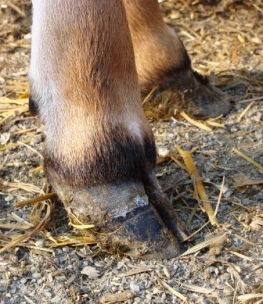 Many people are familiar with beef cows, and they think, “Beef cows never get their feet trimmed, so why do dairy cows!?” or “Gee, I’ve never heard of having to trim cows’ feet!”
Many people are familiar with beef cows, and they think, “Beef cows never get their feet trimmed, so why do dairy cows!?” or “Gee, I’ve never heard of having to trim cows’ feet!”
That is often because dairy animals live a very different life than beef animals and their genetic makeup is different:
- Depending on the breeding, some dairy cattle have a better hoof than others, so some need trimming more than others.
- White toes tend to grow longer faster than black toes.
- Dairy cows are generally fed very high quality types of feed that may promote faster growth.
- Some feeds promote firmer hooves than others.
- Living on concrete day-to-day can cause hooves to grow faster. Living on natural surfaces promotes healthier hooves.
Can you train a cow to behave a trimming time? Most all horses are raised with getting their hooves trimmed regularly. Most dogs are raised from puppy days to have their nails clipped. So, if you have a heifer, practice picking up her feet and working on them. A little practice at a young age will make for a very easy cow to deal with as she ages. If you have bought a mature cow, start slowly and just work on picking up her feet comfortably. Then progress to chipping a little off here and there. Then go for the nippers and a full trim! Good luck!
WHY is it important to keep my cow’s hooves trimmed?
- Any bovine is going to weigh several hundred pounds! All of that weight is carried by these four hooves. So, their very life and happiness depends on hoof care.
- Preventing disease: Shallow heels or mis-shapened hooves can encourage growth of disease and encourage problems such as foot rot and hairy warts. An injured foot causes pain, obviously, and your cow will kick at you at milking time (not fun!) saying, “I’m hurt!” She will probably limp, and she might not even want to get up much. This can cause a decrease in milk production and overall health if a cow is not wanting to exercise or work. Besides, if you’ve ever seen a hairy wart…you’ll do anything to keep from seeing one again!!
- Resource: Are We Trimming Our Dairy Cows Correctly? – by Ladd Seibert, DVM, High Plains Hoof Maintenance Inc.
- Resource:

Be Proactive to Prevent Lameness by Aaron LaVoy
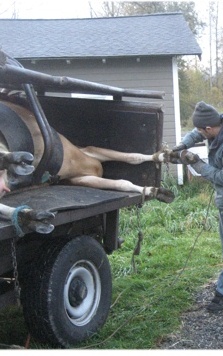
WHEN to trim?
- The quick answer is: Every six months to year or as needed. Preferably in fall, winter, or spring (as hooves can get rock hard in dry summer months.)
- The benefit of trimming your own cow is that you can trim at any time, and you can take your time. See further down for complete instructions. Plus, many people are in the same situation as us – no one nearby is willing to or able to trim for cows (they only do horses, for example).
- Commercial hoof trimmers work by using a chute that the cow walks into. The newer style allows the cow to remain upright and involves the use of straps and hydraulics to keep the cow and trimmer comfortable and safe. The older style tips the cow on her side to allow the trimmer access to all four feet at once and this can be stressful for the cow, so should only be done at certain stages in life/gestation. Some hoof trimmers use grinders that trim very fast and may cause temporary lameness, so either know the work or watch the hoof trimmer working on other cows before allowing them to work on your cows.
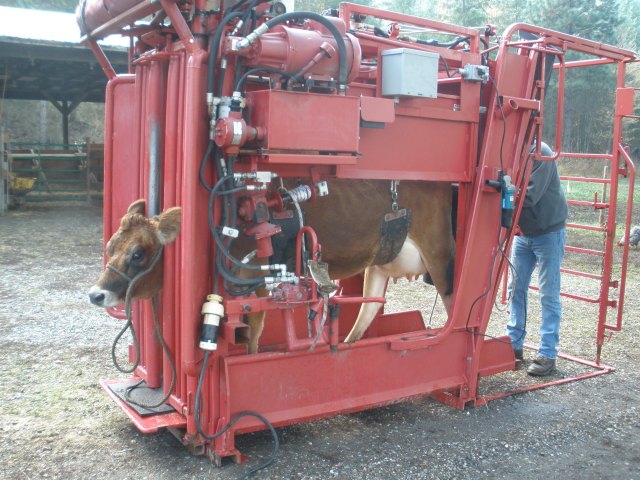
- We do not keep a regular schedule on trimming. When a cow’s hooves are getting long or starting to curl, we trim. We do like to trim heifers at about 4-6 months old to make sure their hooves are developing properly and again around two years old when they calve for the first time.
- Doing hoof trimming by hand is very labor intensive and is used only because we have very few animals and we like to keep up on trimming. Finding a reputable “cattle” hoof trimmer that lives in your area and is available when you need them can be difficult, you’re lucky if you have one! We now have a hoof trimmer in our area, so try to have him come out once a year or as needed, and we do touch-up work on the cows at other times.
Evaluate your cow’s hooves often:
- If they start to grow long, this is the time to trim. The blood vessels build outward with the hoof, so the longer you wait, the more time-consuming the trimming will become – because then you have to just trim off a little bit, wait until that part has firmed up, then trim off some more, until you are back to where the cow should be.
- If the hooves start to crack, you need to trim asap. A small crack can become a major crack if left unattended. Once trimmed, you should also try to find out why your cow’s hoof is cracking. Maybe adding a biotin or zinc supplement can firm up the hoof to prevent future cracking.
-
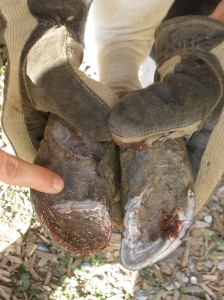
removing a False Pad If the cow starts limping, investigate asap! The limp could be caused by foot rot, an abscess, puncture, etc. Those can all be dealt with accordingly. Also, the hoof could have built up a “false pad” which is like a firm flap covering the bottom of the hoof. This prevents the real hoof from breathing and wearing regularly and can cause pain for the cow. This can be cut out easily during hoof trimming and makes the cow very happy!
- If you are getting ready for a SHOW or APPRAISAL or PICTURING your cow… A little trimming can go a long way! (Judges always seem to notice if the hooves are less than ideal, because the angle of the hoof can dramatically change leg set and rump structure!)
Notice in the picture on the left, how the hoof is longer than it is tall. The toes are starting to grow a little longer than they should.
The goal: to stand more on her toes so the hoof wears naturally & looks more proportional, which reducing the need for trimming. Ideally, you want to see more “heel” on cattle than many of them have.
WHAT you will need:
- Halter and rope to secure animal.
- Gloves and thick work pants for safety.
- Chisel and Mallet are for adult cows. Not needed for heifers.
- www.enasco.com/farmandranch is an excellent place to find all these tools!
Progressive Dairyman had an excellent article on hoof trimming methods – well worth the read: Are we trimming our dairy cows correctly?
How to trim hooves – pictures trimming a cow:
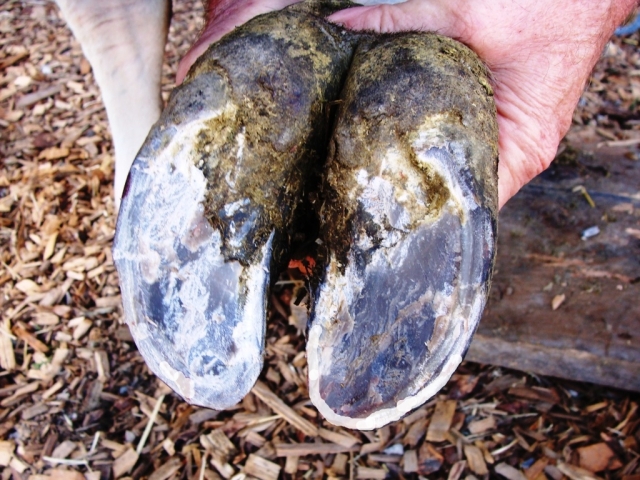
How to trim hooves – pictures trimming a heifer:
 Step one: Confine animal. If two people are present, one person can lift the front hoof while the other person cleans and trims. Otherwise, one person can put the hoof between their legs and have both hands free for trimming.
Step one: Confine animal. If two people are present, one person can lift the front hoof while the other person cleans and trims. Otherwise, one person can put the hoof between their legs and have both hands free for trimming.
Step two: Clean the hoof using a hoof pick. Clean between the toes and around the edges. Make sure to clean off as much on the bottom of the hoof as possible. You can scratch back and forth to work down to the base of the hoof. This will clean the hoof and also expose in detail the area you are working with. Work out any crevices and edges especially well.
 Step three: Once the foot is scraped clean, you will notice a ridge around the edge of the hoof. Run your finger across the hoof and you will notice around the edge it is longer. This is an initial boundary for cutting.
Step three: Once the foot is scraped clean, you will notice a ridge around the edge of the hoof. Run your finger across the hoof and you will notice around the edge it is longer. This is an initial boundary for cutting.
The heel area is a softer pad and we do not touch that area at all. We limit trimming to the areas that the line shows up (outer edges and half way up the inner toe.) 
The red lines indicate where the hoof wall is to be trimmed. The yellow spots indicate the end of the hooves. Both of these areas can be trimmed off. Note that the hoof ends are rounded and smooth. Remember: leave the heel alone. Notice there are no markings in that area. Rarely does a dairy cow have “too much” heel.
 Step four: Using a pair of nippers, trim around the bottom of the hoof, going up about half way on the edges of either hoof and down to the toe. Only nip off a little at a time! Slowly keep nipping to shape the hoof. (For example, on this 4 mo. old heifer, we nipped about 1 cm. from the front tip and 1/2 cm around the edges.) If at any time you cut and reach blood: STOP! And do not trim down any further. Try to even off the edges around that area without cutting any deeper.
Step four: Using a pair of nippers, trim around the bottom of the hoof, going up about half way on the edges of either hoof and down to the toe. Only nip off a little at a time! Slowly keep nipping to shape the hoof. (For example, on this 4 mo. old heifer, we nipped about 1 cm. from the front tip and 1/2 cm around the edges.) If at any time you cut and reach blood: STOP! And do not trim down any further. Try to even off the edges around that area without cutting any deeper.
You can get the bottom of the hoof flat and even by using a hoof knife or the chisel to peel off little layers at a time.
If you compare the photo to the right to the photo just above it, you can see that all we did was trim around the edges and scrape the bottom of the hoof to level it out. You will have to remove the most hoof from the front tips of the hoof and try to cut back on the bottom side of the hoof from the tip back a little to try to get that area shortened so she will walk more on her toes and less on her heel.
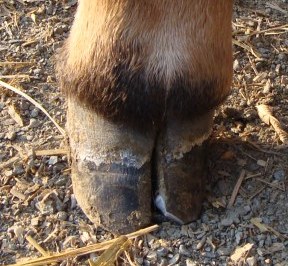
 Notice on the photo (left), the inner toe had started to twist. This is not good and should be corrected so that the toes line up as close to parallel as possible.
Notice on the photo (left), the inner toe had started to twist. This is not good and should be corrected so that the toes line up as close to parallel as possible.
You can see in the picture (left) that the inner toe has been trimmed and the left toe has not been trimmed (it will be trimmed next and is just photographed here to show how much was cut off the end). On this heifer, we were able to take off quite a bit and did not hit blood. Each animal varies, though, as you will learn as you trim the same cows again.
Before: & After:
.
To give a prettier trim, you can also use a rasp to file off the old hoof around the tip area.
LAST STEP:
Take your animal on a walk and have someone else evaluate the animal’s hooves and how they walk:
- First, is she limping at all? (If so, be more careful next time!)
- Is she walking equal on each hoof? (equal weight distribution!)
- Are all four hooves fairly equal in size and shape? (If not, see which hooves need adjustment and trim them a little more to try to get each hoof to look comparable.)
Here is a cow who has a good set of hooves:
<—— COW
versus
HORSE ——>
Hoof
(Someone asked about the difference between trimming a cow versus a horse. A cow does not have a frog, and the heel is almost never trimmed. Also, because of the two separate toes, a rasp/file does not work as well. The toes wiggle too much, whereas a horse has one hoof and is more stable with a file.)
FOR REAR HOOVES: Cows are fairly content letting you hold up their front legs. Rear legs are definitely another story!!
- For young heifers, you can have one person lift the leg and hold onto the leg with one hand behind the hock and one hand around the ankle. The second person can do the trimming just like you would do for the front legs. BE CAREFUL not to get kicked!
- Some people are able to get their cows comfortable with having their feet worked on while laying down.
- For older cows, you can start by putting down a thick scrap of plywood. Get the cow to put a foot on the board and then instead of nippers, you can use a chisel and rubber mallet. Similar to the nippers, slowly chip off around the edges at a 45 to 90 degree angle to cut off the bottom 1/2 cm or so of hoof wall. When you’ve done as much as you can, you’re done….
- Unless you are brave and want to try lifting the hoof. Some cows do just fine! If you can lift the hoof, you can clean off the pad and trim better around the toe and on the bottom of the hoof to get it much more level.
- Take your time and if the cow gets fussy, set her leg down for a few seconds, reassure her, pet her on her rump and legs and try again. Hopefully, each try will be easier and each trim will be easier!
- https://www.youtube.com/watch?v=BxvuXyJ4nrs – This video shows a slick way to lift the cow’s rear leg. Note – Most family cows have much harder feet from living in a healthier environment, so a hoof knife may not cut as easily as it does for the cow in this video! Also, avoid cutting on the heel unless absolutely necessary.
((Above) This cow was owned by some friends of ours and Jay is trying to slowly cut back on the toes to bring them back to normal length. Notice above how much toe Jay has removed on the foot in comparison with the other hoof, not yet done. He was luckily able to chip back fairly far, but not all cows can handle the extra trimming. Some start bleeding right out at the edge, which is why very gradual steps are important. Really, this cow’s hooves should have been trimmed sooner.)
STUDY OF A COW:
 This cow was born and raised on a commerical dairy. They fed a very “hot” ration, including free choice distillers grains, silage, and grain with not much hay or pasture. Her knees and hocks were swollen up when she was purchased by our friends as a second calf two year old. They were very happy to take her to their farm and rehabilitate her. With improved diet, pasture, and the love of these two farmers, all her swelling went away, she increased in milk production, and she has had numerous healthy calves for them. Notice how long the feet are and especially the back foot that is hidden by the one in front. See how the pasterns almost touch the ground!? Not good! By maintaining her feet (trimmed around every 6 months) this cow now has good feet to support her weight and her condition is much improved!
This cow was born and raised on a commerical dairy. They fed a very “hot” ration, including free choice distillers grains, silage, and grain with not much hay or pasture. Her knees and hocks were swollen up when she was purchased by our friends as a second calf two year old. They were very happy to take her to their farm and rehabilitate her. With improved diet, pasture, and the love of these two farmers, all her swelling went away, she increased in milk production, and she has had numerous healthy calves for them. Notice how long the feet are and especially the back foot that is hidden by the one in front. See how the pasterns almost touch the ground!? Not good! By maintaining her feet (trimmed around every 6 months) this cow now has good feet to support her weight and her condition is much improved!
HIRING A HOOF TRIMMER:
- Try to find someone that has been recommended by numerous people. Be very wary, as one bad trim can make your cow lame for a long time!
- Some say to trim late in lactation so as to not affect milk production. Another opinion is to trim fresh cows and bred heifers.
- Try to see the person in action before the trim your cows (maybe at a neighboring dairy farm)
- Find out what they charge. Usually, a cow is no more than $25 for a trim. May cost extra if the hoof is wrapped or blocked for special treatment.
- Try to avoid or limit use of grinders. There is a very fine line between taking off enough hoof and taking off too much hoof. Because grinders move so fast, it really takes an expert to use one without trimming off too much hoof. If the trimmer is willing, ask him to please not use a grinder the first trim. If you have high confidence in the trimmer, then you can go from there as to if you think a grinder is needed.
- Make sure the hoof trimmer has lots of lighting to work with, outdoors is ideal.
Resources:
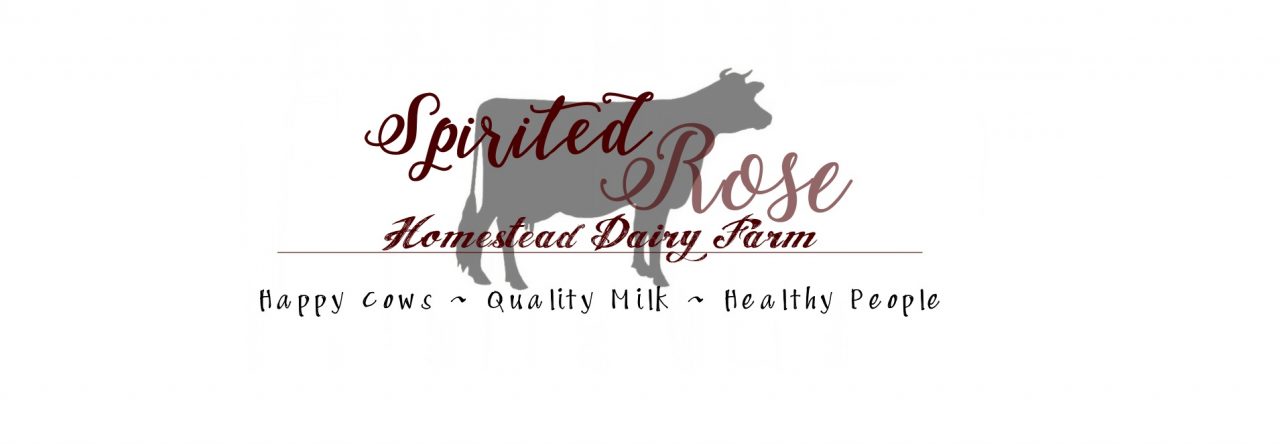


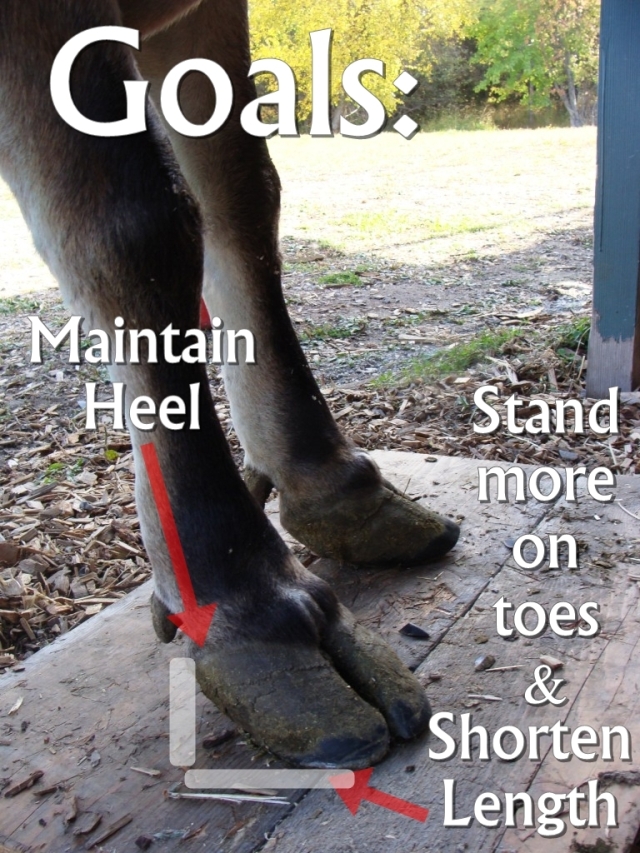
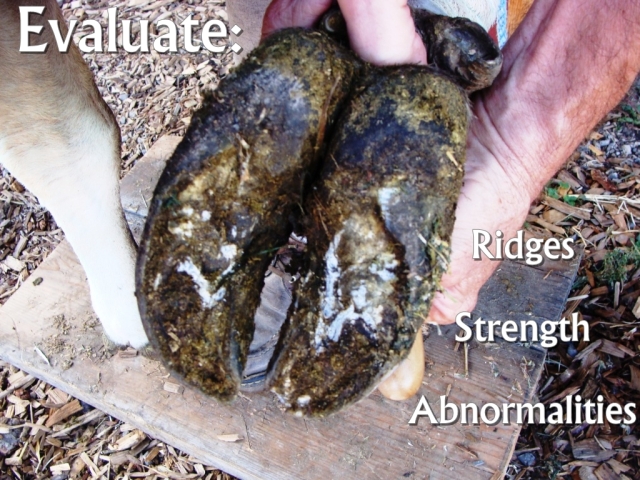
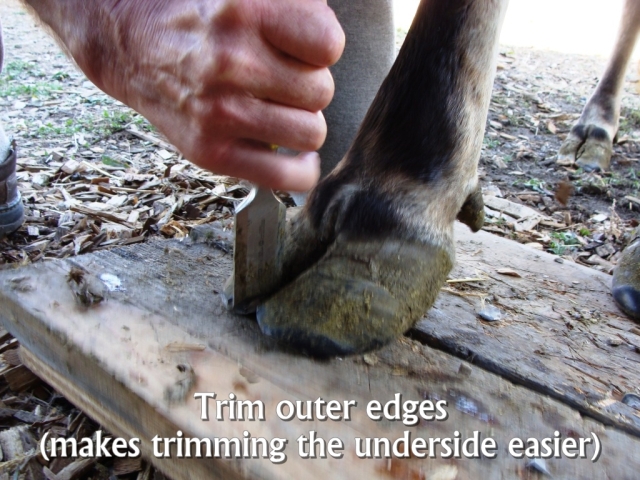
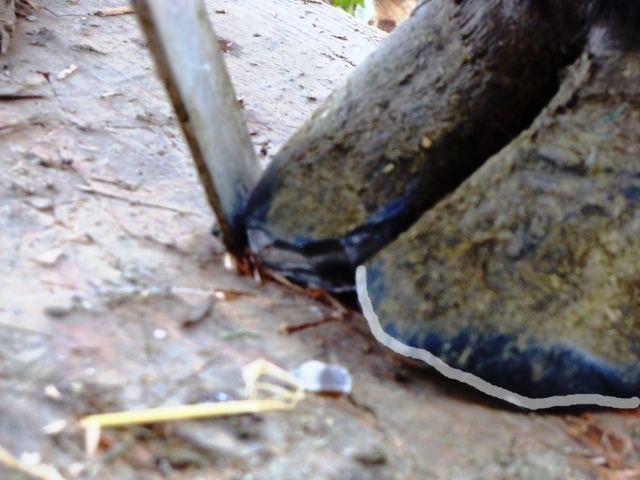
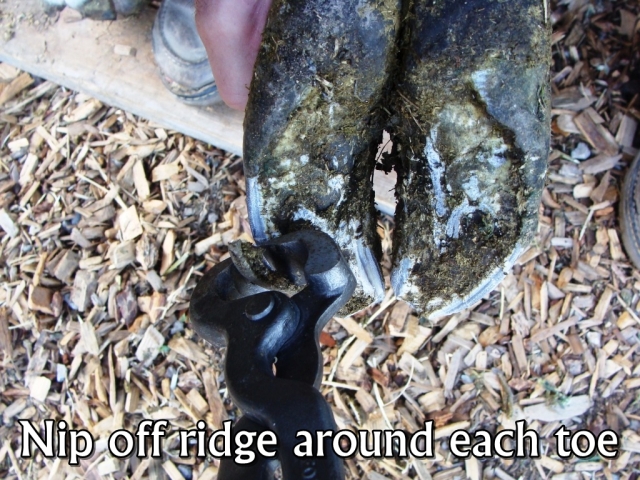
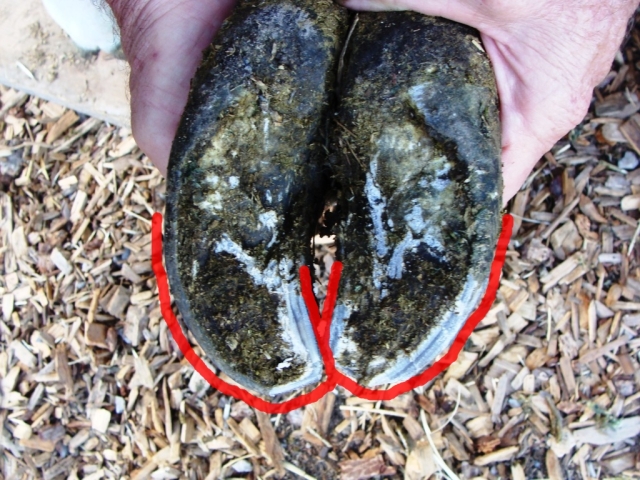
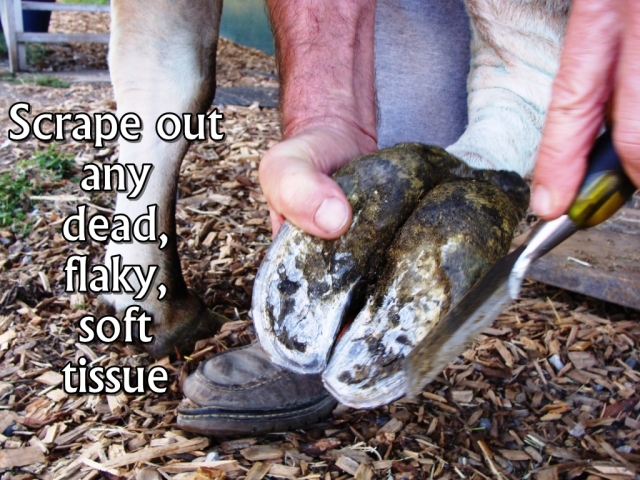
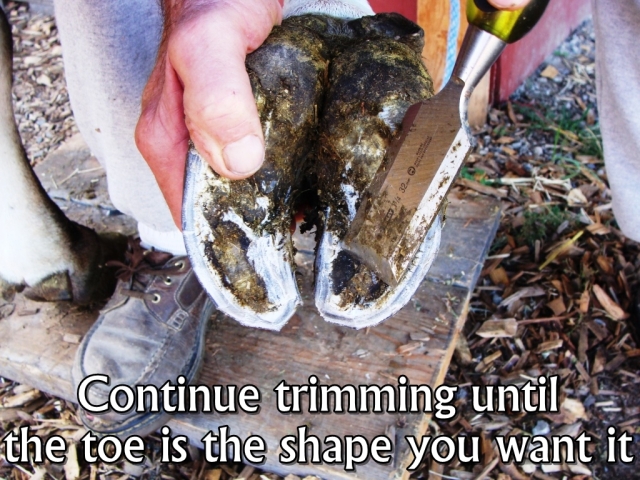
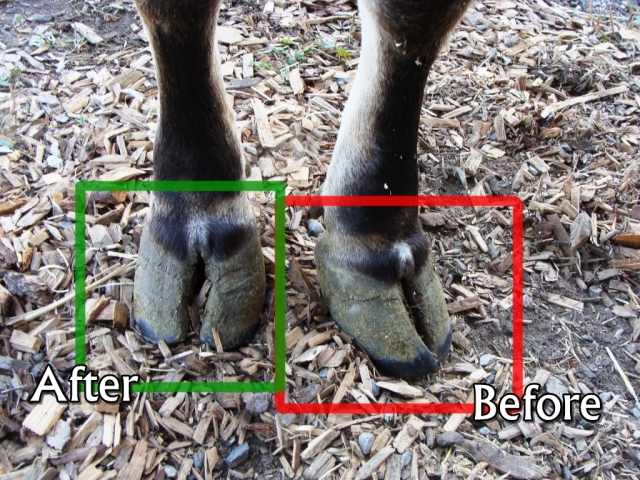


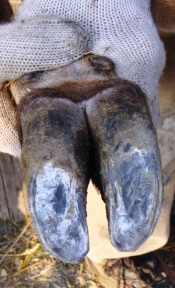



Pingback: How to Hoof Trim a Milk Cow – Spirited Rose Homestead Dairy Farm
I am the one who sturded Animal production and animal health so I like see this blog because helps us to be learning more about generally animal production and Animal health so thankfully and God blesses
LikeLike
In the article it is mentioned that trimming cattle in a lay over chute is very traumatic. I have been trimming cows in a lay over chute for nearly 25 years. In that time I have always worked diligently to keep the cattle calm and use and build equipment that keeps them very safe and comfortable. When cattle are handled by a true professional they will not see trimming as a traumatic experience. Sometimes we will trim a entire herd of milk cows in one day and check back with the farm a few days later and ask about milk production, often we are informed that the cows never missed a beat and did not fall in production at all and usually go up in production after trimming. This tells me that trimming done correctly is not a traumatic experience. We are trimming professionals and handle cattle with care, after all we love our jobs and want to be invited back.
LikeLiked by 1 person
I agree that most cows do fine, but some really do poorly being tipped sideways. My Rose cow would go off production for a few days after being trimmed that way, but if being trimmed in an upright chute or being trimmed by hand, she had zero stress. So ideally, if you have a choice, an upright chute would be preferable or hand trimming, but if tipping them is the option available, it’s better than not being trimmed. I understand that most hoof trimmers still have older style chutes that tip sideways and I wouldn’t want to deter someone from getting their cows trimmed if that was their option. Many people do not have access to a hoof trimmer (for cows) at all, which is why we made this page. I apologize if you felt this page deterred people from hoof trimmers and I will re-read through it and revise. thank you for your service. 🙂
LikeLiked by 1 person
When I was a kid my dad showed me a trick to get our cattle to lie down for hoof trimming and doctoring. He used a 30-40 foot long strong 3/4 to one inch thick rope. He tied it to the halter, as if to lead them, along with a regular shorter lead rope. The short rope was held by one of us. Note: Don’t tie the lead rope to a fence post, large tree or other unmovable object. It can present unforeseen problems as your animal lies down {the best for safety}. The one holding the long rope wraps it in a half hitch around the steers girth just behind the front legs, a second half hitch around the body in front of the hind legs then stand well behind your animal and pull the rope. As the rope tightens it presses on the steers nerves running down to the legs and the steer lies down. As long as the rope has tension on it the steer can’t stand up. At this time the lead rope can be dropped on the ground and the person holding it can easily and quickly trim the hooves.
LikeLike
Interesting method, thanks for sharing.
LikeLike
Do you have problems with Digital dermatitis or Interdigital dermatitis if you trim the cattle in the wright time?
LikeLike
Good question. We live in a very dry climate, so we’re lucky to not have any hoof diseases to deal with. We trim mostly to keep the cows comfortable and to give them the best traction for snow/ice in winter.
Common hoof ailments such as hairy wart or foot rot can definitely be minimized if cattle are kept on a good trimming schedule!
LikeLike
FAQ: I want to trim my cow’s hooves, but she won’t let me touch them. Can I tie them down?
I’d be very careful with any restraints or force. Scaring a cow might just make her permanently scared. Is she okay with her front feet being done? At first, just do fronts and get her very comfortable there.When she is good there, then you can chisel around the back toes WITHOUT picking up the hoof. Most cows don’t want their back feet picked up. I just turn into a neat freak and want the bottoms nice and clean and trimmed, so after a while we try to get the cows to pick up their back feet. But it’s definitely a slow process. :)You can angle the chisel to try and get a bit underneath the hoof. It’s not the most ideal situation, but keeping the worst of the tips trimmed off is better than nothing and eventually, working with her, she should allow you to pick up her feet.Or you can try to trim when she’s napping laying down.
LikeLike
There are a few good youtube vids. The british person shows tell-tale signs of what to look for health wise and how to balance the two toes in each hoof. Remarkable what we learn affects the behavior and mood of the cow.
Thanks for your photos and indepth write up here too. Many points are covered here.
LikeLike
Thanks for sharing. Yes, there are a lot of philosophies on hoof trimming! 🙂
I watched the video and he uses a hoof knife like he’s cutting through butter – something to keep in mind is: cows that are not on concrete and are outside in summer time will have very strong hooves and a hoof knife may not cut through so easily!
LikeLike
I am looking for someone to trim my cow hooves I live in the new Hartford conn ares if you know of someone please email me at terryfree8@gmail.com
LikeLike
You are your own best trimmer. 🙂 Might put an ad on your local Craigslist searching for a hoof trimmer.
LikeLike
What a fascinating and informative post! I don’t have cows or know much about them. My little girl asked me if cows got their nails clipped after we had watched horses getting theirs clipped on Sesame Street. So a google search landed me here! Thank you so much for sharing your knowledge! Wonderfully written! You learn something new everyday! Thanks again!
LikeLike
Thanks for this info. I trimmed my housecows back hooves for the first time today, I was quite nervous how she would react, as she is 9 years old, and has never had them trimmed before. I had no hope of doing it with her standing, as I’ve tried picking up her feet when she has been in the milking bale, and it was not very successful. I found her lying in the paddock very relaxed, and decided to try the trimming with her just lying down, and it worked like a charm. Her toes were up in the air, so very accesssible, and she just lay there and let me do it. You could have knocked me over with a feather!
LikeLike
Great! I bet she’s feeling young again on those new shoes!
Some cows are not comfortable even when laying down, so you can practice just touching their feet when they are down, and just continuing to let them know you mean no harm. 🙂
LikeLike
Thank you so much for your wonderful instructions!! We really want to trim our two guernseys hooves but I am so worried about making a mistake that will cause them any problems. We have had a trimmer come who does a good job but our cows are terrified of everybody for weeks after being lifted up into his chute. So we are going to try working on their hooves a little at a time and hopefully keep them well maintained. I feel a little more confident with your photos and great detailed information, Thank you for sharing!!!!! Maybe you should offer a class. Where do you live????
LikeLike
Laurie,
We are in Washington state. I do plan to do a video someday when we have extra hands around to help film us trimming hooves. I feel like a video would be the best way to show people. If anyone lives nearby, they’re always welcomed to come by some time when we are trimming. 🙂 The nice thing about doing your own trimming is that, as you said, the cows are much calmer when you’re just lifting one foot at a time. Also, you will work slower, so if you happen to go too far and hit blood, you can stop instantly. A hoof trimmer with a grinder may not stop in time! Our tip for trimming is to always go very slow and only take off small bits at a time (less than 1/4 of an inch).
Good luck with your Guernseys. They’re bigger than JJerseys but usually a quiet breed!
LikeLike
Very handy! Thank you for writing this. I’m getting a friendly little Dexter bull of a lady soon and I noticed his feet were quite long, we’ll see how we go!
LikeLike
I’m glad you have this info up here. We have a little Dexter that needs her hooves trimmed, and haven’t been able to find anyone around here who can do it. So since we must go for it ourselves, this will really help with that. Thanks!! 🙂
LikeLike
I would like to see someone trim a dairy cow hoof.
LikeLike